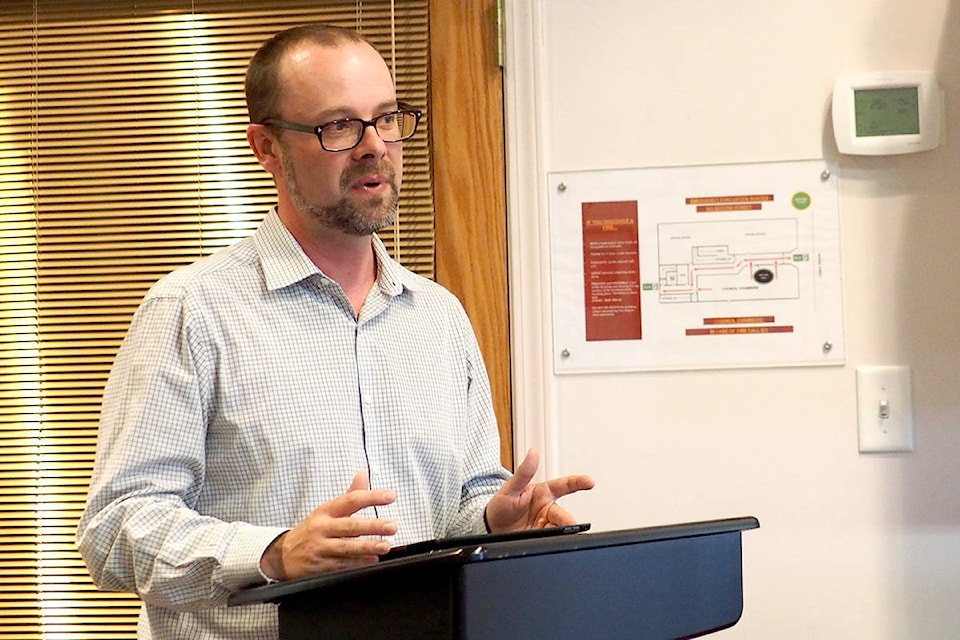The City of Revelstoke says its taking steps to fix the sewage treatment plant after receiving a number of complaints about the smell in recent weeks.
Mike Thomas, the city’s director of engineering, gave council an update on the troubled facility on Tuesday.
The plant started releasing its foul odour with the onset of warm weather in recent weeks, and the calls for the city to do something about it came as well.
Thomas wanted to assure council that staff was taking the issue seriously.
He explained the sewage lagoons work by processing the waste using naturally occurring bacteria. “We coax that along by adding in air and mixing the ponds, making sure the bacteria can get to work in there,” he said.
The key to the process is adding air to the ponds to provide oxygen and create an aerobic process. When it’s working, the smell is benign. When it’s not working, the process becomes anaerobic and the sewage lagoons emit stinky hydrogen sulfide. It’s worse in the summer, because the bacteria works faster when its hotter. During the day, the odour generally escapes into the atmosphere, but in the evening, inversions cause the air to be compressed close to the ground and waft into the surrounding neighbourhoods.
It forces residents living in Southside to close their windows and hunker down inside when they’d rather be outside, enjoying a nice evening.
The problem has been going on for years. In 2015, after residents protested outside the public works yard, the city spent almost $360,000 installing an odour scrubber to the headworks building at the sewage treatment plant and $120,000 to add mixers to the lagoons.
Thomas said there was no more smell coming from the headworks building, but that the odour is still coming from the lagoons. He said the city recently added more blowers to provide more air into the lagoons and hopefully coax along the aerobic process , but it would take several days to see if they helped.
The city could also look at mandating all restaurants install grease traps to prevent those effluents from entering the sewage treatment plant.
“Get rid of that at the property line and now it doesn’t impact operations of sewer lift stations, sewer mains and sewer treatment plants,” said Thomas.
The city also issued a request for proposals for a consultant to come in and offer up a long-term solution for the sewage treatment plant. It could mean expanding, upgrading or even building a second facility to take the pressure off the existing one.
“Out of this study, there will be a design process of whatever this new facility or upgrades are,” said Thomas.
Any long-term solution is almost certainly going to be very expensive. The city’s 2017-21 financial plan budgets $21,250,000 for upgrades in 2019 and 2020.
Mayor Mark McKee said he wants the public to know the city is taking the issue seriously.
“As far as I’m concerned, this is a very serious situation and I’m glad we have a plan that’s moving forward,” he said. “We have to have a short-term plan, as well as look at a long-term plan.”
